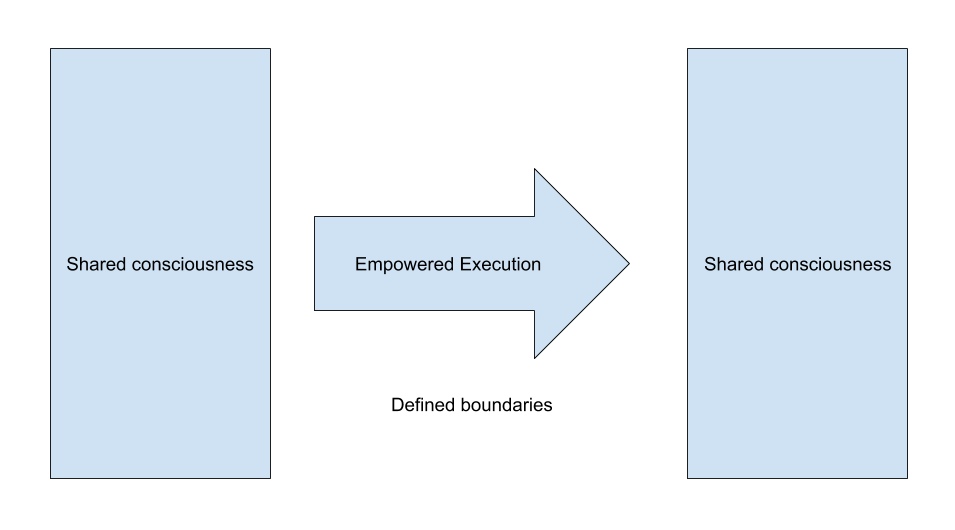 HBR Guide to Making Every Meeting Matter by Harvard Business Review
HBR Guide to Making Every Meeting Matter by Harvard Business Review
My rating: 4 of 5 stars
Do you even need to hold a meeting?
- Have you through it through? No – schedule time to think strategically
- Do you need outside input to make progress? No – schedule time to do the work
- Do you need a real-time conversation? No – send an email
- Does it need to be face-to-face? No – send a chat or have a video call
- If yes to all of the above schedule the meeting and prepare for it
Be consistent on what a meeting actually means
- Gatherings of two people are simply conversations
- Sessions where people are collaborating on a task are group work sessions
- Idea generation sessions are brainstormings
- Information dissemination sessions for convenience are generally a bad idea
- Information dissemination sessions for alignment a meeting may or may not be valuable
- Meetings out of habit or tradition are formality meetings, check if these are valuable
- Where connecting is the key their social meetings, likely a team building more suitable
- Decision-supporting meetings to aid a leader in making a decision either seeking input or asking for approval
Understanding the meetings goals by having a clear answer to:
- What do you want to have debated, decided or discovered at the end of this session that you and the team haven’t already debated, decided or discovered?
- What do you want attendees to say when their team members ask, “What happened at the big meeting?”
Shorter meetings
25 or 50 minute meetings allows for people to better get from one meeting to the next without a cascading problem. Instead of an hour try 25/30 min meetings as the short meeting will push for the more important content to be discussed, more preparation, people arriving on time, etc.
Consider having a timer which prevents people speaking for too long to help people focus on the point they want to make and keeps the meeting moving quicker.
Smaller meetings
For active discussions 8 people is about the limit, for brainstorming with variety of input 18 beyond that it needs to be more of a presentation/cascade format as it is harder for people to contribute.
Ground rules such as
- Silence Denotes Agreement – So people feel compelled to speak up in the moment.
- Commitment to start and end on time
- Ask for participation and openness to ideas
- Agree to listen and to limit interruptions
- Clarify how decisions will be made
- Rule out the myth of multitasking
Decision making methods
Group consensus
Advantages
- Allows all participants to share their expertise to arrive at the best decision
- Results in all participants understanding the decision and implications
- Greatly enhances the chance of buy-in
Disadvantages
- May think they all need to agree to and believe in the final decision which means it can go round in circles
- May take more time than other decision making methods
- May require a second decision making method if consensus can not be reached
- Leaders can feel obliged to follow the decision and abdicate responsibility
Majority Vote
Advantages
- Speed in decision making
- Group perceives the decision is fair
- You hear from everyone, even people who are usually quiet
Disadvantages
- Open voting requires taking a public stand on an issue
- Can be perceived as a winner and loser
- People may not feel comfortable voting according to their true feeling or voice reservations
- Losers often feel that their voice has not been heard
- Not everyone buys into the decision
- May or may not arrive at the best decision
- Leaders can feel obliged to follow the decision and abdicate responsibility
Leaders Choice
Advantages
- It’s the fastest approach to decision making and may be the best approach when time is short or in a crisis
- If participants respect the leader then they are more likely to buy into the decision.
- Leaders are completely accountable for the decision and its implications
Disadvantages
- Participants may feel that they are not heard, especially if they have not been given the opportunity to voice their opinions
- Implementation may be more challenging as people don’t feel ownership or buy-in to the result
Not attending a meeting
- What is the value of the meeting? No – speak to the organiser to improve its chances of success or getting it cancelled
- Am I the right person to attend? No – can you recommend someone else to attend in you place
- Is the meeting a priority for me right now? No – can you contribute in advance or attend only part of the meeting
Closing
- Check for completeness – before moving on check that everyone had said everything they need to, if you move on too quickly people will likely re-open the topic again later.
- Check for alignment – “Is everyone ok with where we ended up?” to see if people can’t live with the decision
- Agree on next steps – Get firm, clear commitments
- Reflect on the value – Be verbal and concrete about the benefits from the discussion
- Check for acknowledgements – Acknowledge if people made special contributions
- Gather feedback – How did it go? How could we be even better next time?
 Empowered: Ordinary People, Extraordinary Products
Empowered: Ordinary People, Extraordinary Products One Mission: How Leaders Build A Team Of Teams
One Mission: How Leaders Build A Team Of Teams